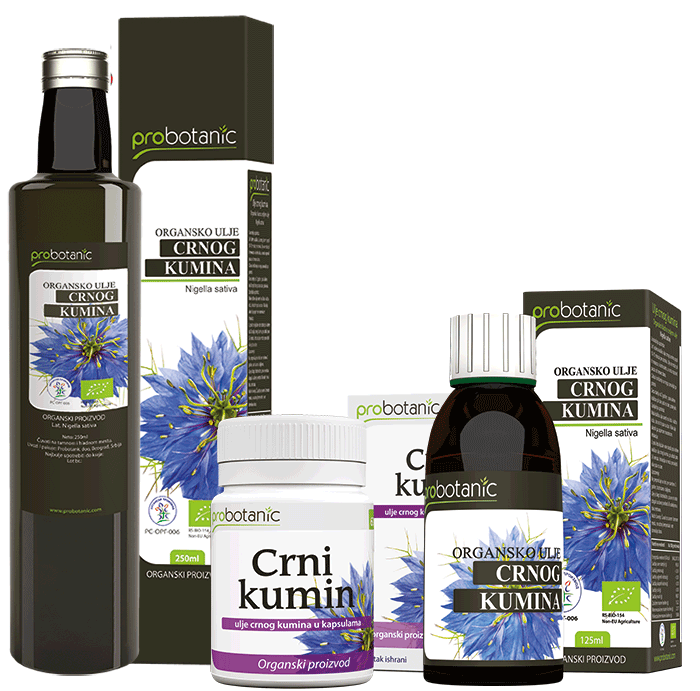One of the most famous plants in the history of medicine lately called “modern panacea” is the black cumin (Nigella sativa). This is a flowering plant from the family of Ranunculaceae, which comes from the South-West Asia. Black cumin seeds were found in the tomb of famous pharaoh Tutankhamun, and the oil was used for treating various health problems even by ancient civilizations, for stabilizing the immune system, for fighting asthma, digestion problems, cold, headache, toothache, for relieving breathing difficulties and against various infections.
Scientific studies, initiated about half a century ago, resulted in discovery of more than one hundred chemical components but also incredible medical properties of the black cumin seeds and its oil. Black cumin oil is rich in unsaturated and essential fatty acids. It mostly contains linoleic and oleic acid, including palmitoleic and linolenic acid. Predominant active components in the black cumin oil are terpenes and terpenoids. The most efficient is nigelon, which relaxes the muscles, expands bronchi and reduces viscosity of bronchial secretion, and timohinon with its anti-inflammatory and analgesic effects which lowers the level of oxidative stress in the body caused by the effect of free radicals. It contains vitamin B complex, vitamin A, C, E, potassium, sodium, calcium, zinc, selenium, iron, folic acid, and essential amino acids.
In the year of 1996 the U.S Federal Food and Drug Administration approved the use of black cumin oil for boosting the body’s immune system.
Since black cumin oil comes from the East, in 2003 doctors in Saudi Arabia tried to define its pharmacological and toxicological properties. The scientists proved that black cumin oil lowers high blood pressure, improves blood circulation and decreases level of cholesterol and glucose in blood.
Studies of active components in black cumin are rather significant and we are sharing them here with you.






Leave A Comment
You must be logged in to post a comment.